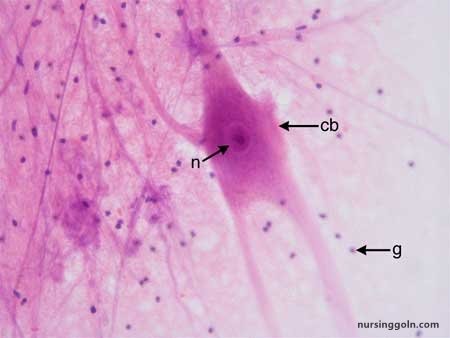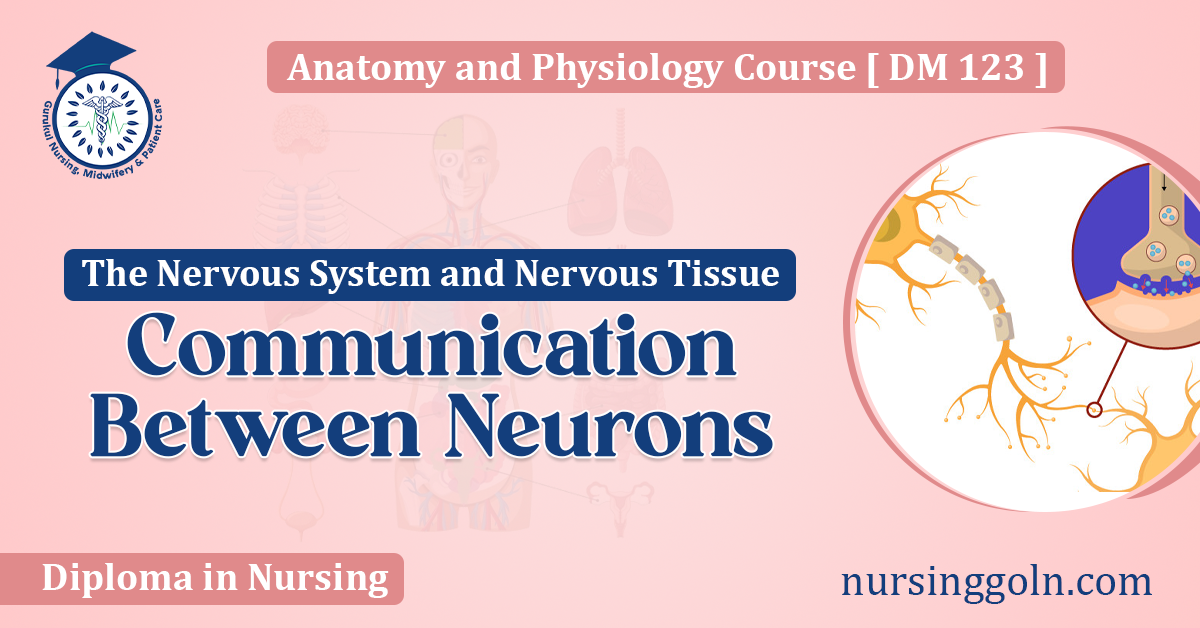Today our topic of discussion is ” Communication Between Neurons “. The nervous system is the epicenter of human cognition, behavior, sensation, and motor activity. Serving as the crux of this intricate network are the neurons, nerve cells tasked with transmitting and processing information. But how do these cells “talk” to one another? This article offers an in-depth exploration of the communication between neurons, a process pivotal to the seamless functioning of the nervous system.

Communication Between Neurons: The Nervous System and Nervous Tissue
1. The Neuronal Landscape
Before embarking on the journey of neural communication, it’s essential to familiarize ourselves with the basic neuronal architecture:
- Cell Body (Soma): The central hub containing the nucleus and organelles.
- Dendrites: Branch-like structures that receive signals from other neurons.
- Axon: The elongated structure that conducts action potentials and transmits signals to other cells.
2. The Synaptic Connection
Neurons communicate via specialized junctions known as synapses. A synapse typically comprises:
- Presynaptic Neuron: The neuron sending the message.
- Synaptic Cleft: A tiny gap separating the two neurons.
- Postsynaptic Neuron: The neuron receiving the message.

3. From Electrical to Chemical: The Birth of the Neurotransmitter
Neurons use electrical impulses (action potentials) to convey information along their length. However, to communicate with a neighboring neuron, they employ a chemical approach.
When an action potential reaches the axon terminals of the presynaptic neuron, it prompts the release of neurotransmitters, which are stored in vesicles. These molecules traverse the synaptic cleft and bind to receptors on the membrane of the postsynaptic neuron.
4. Excitatory vs. Inhibitory Signals
Neurotransmitters can evoke two main types of responses:
- Excitatory Postsynaptic Potential (EPSP): These neurotransmitters depolarize the postsynaptic membrane, increasing the likelihood of the neuron firing an action potential.
- Inhibitory Postsynaptic Potential (IPSP): These neurotransmitters hyperpolarize the postsynaptic membrane, decreasing the chance of an action potential.

5. Termination of the Signal
For precise and efficient communication, it’s imperative that the neurotransmitter’s signal is brief. The termination of this signal can occur through:
- Reuptake: Neurotransmitters are reabsorbed by the presynaptic neuron.
- Enzymatic Degradation: Specific enzymes break down the neurotransmitters.
- Diffusion: Neurotransmitters drift out of the synaptic cleft.
6. Neurotransmitters: The Chemical Messengers
There are several neurotransmitters, each with its unique role. Some prominent examples include:
- Acetylcholine: Involved in muscle activation, learning, and memory.
- Dopamine: Linked to pleasure, reward, and motor functions.
- Serotonin: Regulates mood, appetite, and sleep.

7. Plasticity and Synaptic Strength
Synapses aren’t static. They undergo changes based on activity, a phenomenon known as synaptic plasticity. Long-term potentiation (LTP) and long-term depression (LTD) are processes that increase or decrease synaptic strength, respectively. Such modifications can influence learning and memory.
8. Neuromodulation: Fine-tuning the Message
Beyond neurotransmitters, the nervous system employs neuromodulators. These chemicals don’t directly elicit EPSPs or IPSPs. Instead, they modify the neuron’s response to neurotransmitters, amplifying or dampening the message.
9. Beyond Chemical Synapses: The Electrical Synapse
While chemical synapses dominate the nervous system, electrical synapses (or gap junctions) offer a more direct method of communication. Here, electrical current flows directly between cells, allowing for faster, but less modifiable, communication.
10. Conclusion: The Symphony of Neuronal Communication
The exchange of information between neurons is akin to an orchestra. Each neuron, like an individual instrument, plays its part in creating the symphony of our thoughts, actions, emotions, and perceptions. Through the intricate dance of electrical and chemical signals, the nervous system crafts our experiences, making communication between neurons not just a biological process but the very essence of our existence.
Read more:
